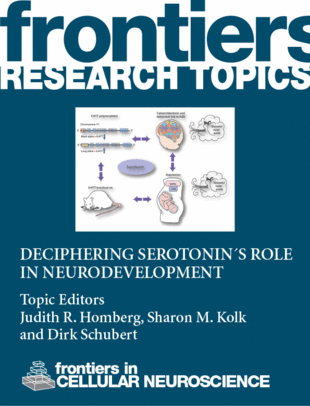前沿 | 作为亨廷顿氏病潜在生物标志物的 SH-SY5Y 人体细胞模型中微 RNA 的差异表达
IF 4.2
3区 医学
Q2 NEUROSCIENCES
引用次数: 0
摘要
亨廷顿氏病(Huntington's disease,HD)是由 HTT 基因中的 CAG 三核苷酸重复扩增引起的;目前,HD 的确切发病机制仍不清楚。研究 HD 的一个有前途的方向是确定其发病的分子机制和微 RNA(miRNA)的作用。本研究旨在确定 HD 人类细胞系模型中 miRNAs 的特征,作为 HD 的诊断生物标志物。为研究 HD,人类 SH-SY5Y HD 细胞模型基于两种不同形式 HTT 的表达:pEGFP-Q23 和 pEGFP-Q74。采用免提取 HTG EdgeSeq 方案测定了稳定表达 Q23 和 Q74 的 SH-SY5Y 神经元细胞模型样本中的 miRNA 水平。共检测到 2083 个 miRNA,其中 354 个(前 18 个 miRNA)miRNA 在 Q23 和 Q74 细胞系中显著差异表达(DE)(p < 0.05)。大多数 miRNA 在 HD 细胞模型中都出现了下调。此外,我们发现六个 DE miRNAs 靶向七个基因(ATN1、GEMIN4、EFNA5、CSMD2、CREBBP、ATXN1 和 B3GNT),这些基因在神经退行性疾病中发挥重要作用,而且与野生型 Htt(Q23)相比,突变型 Htt(Q74)中的 DE miRNAs 在 RT-qPCR 中表现出明显的表达差异(p < 0.05 和 0.01)。我们利用实验和生物信息学方法展示了 HD 中最重要的 DE miRNA-mRNA图谱、相互作用结合位点及其相关通路。这将有助于开发新的诊断策略,并为治疗 HD 提供替代疗法。本文章由计算机程序翻译,如有差异,请以英文原文为准。
Frontiers | Differential microRNA expression in the SH-SY5Y human cell model as potential biomarkers for Huntington’s disease
Huntington’s disease (HD) is caused by an expansion of CAG trinucleotide repeat in the HTT gene; the exact pathogenesis of HD currently remains unclear. One of the promising directions in the study of HDs is to determine the molecular mechanism underlying the development and role of microRNAs (miRNAs). This study aimed to identify the profile of miRNAs in an HD human cell line model as diagnostic biomarkers for HD. To study HD, the human SH-SY5Y HD cell model is based on the expression of two different forms: pEGFP-Q23 and pEGFP-Q74 of HTT. The expression of Htt protein was confirmed using aggregation assays combined with immunofluorescence and Western blotting methods. miRNA levels were measured in SH-SY5Y neuronal cell model samples stably expressing Q23 and Q74 using the extraction-free HTG EdgeSeq protocol. A total of 2083 miRNAs were detected, and 354 (top 18 miRNAs) miRNAs were significantly differentially expressed (DE) (p < 0.05) in Q23 and Q74 cell lines. A majority of the miRNAs were downregulated in the HD cell model. Moreover, we revealed that six DE miRNAs target seven genes (ATN1, GEMIN4, EFNA5, CSMD2, CREBBP, ATXN1, and B3GNT) that play important roles in neurodegenerative disorders and showed significant expression differences in mutant Htt (Q74) when compared to wild-type Htt (Q23) using RT-qPCR (p < 0.05 and 0.01). We demonstrated the most important DE miRNA-mRNA profiles, interaction binding sites, and their related pathways in HD using experimental and bioinformatics methods. This will allow the development of novel diagnostic strategies and provide alternative therapeutic routes for treating HD.
求助全文
通过发布文献求助,成功后即可免费获取论文全文。
去求助
来源期刊

Frontiers in Cellular Neuroscience
NEUROSCIENCES-
CiteScore
7.90
自引率
3.80%
发文量
627
审稿时长
6-12 weeks
期刊介绍:
Frontiers in Cellular Neuroscience is a leading journal in its field, publishing rigorously peer-reviewed research that advances our understanding of the cellular mechanisms underlying cell function in the nervous system across all species. Specialty Chief Editors Egidio D‘Angelo at the University of Pavia and Christian Hansel at the University of Chicago are supported by an outstanding Editorial Board of international researchers. This multidisciplinary open-access journal is at the forefront of disseminating and communicating scientific knowledge and impactful discoveries to researchers, academics, clinicians and the public worldwide.
 求助内容:
求助内容: 应助结果提醒方式:
应助结果提醒方式:


